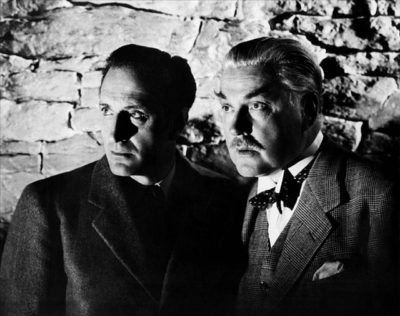
“There is nothing more deceptive than an obvious fact” – Sherlock Holmes, “The Boscombe Valley Mystery”
Most writers know that they may use works in the public domain without asking copyright permission or paying a licensing fee. Sorting out copyright expiration dates can be a tricky proposition, so wise writers consult the excellent (and free) brochure about public domain published on the U.S. Copyright Office’s website at copyright. (PDF Download)
But what happens when the time span of a fictional series is so long that it traverses both public domain and copyright protections? Sir Arthur Conan Doyle’s fifty-six short stories and four novels about Sherlock Holmes cover an amazing 40 years of publication, from “A Study in Scarlet,” published in Beeton’s 1887 Christmas Annual (released in America in 1890) to “The Veiled Lodger” and “Shoscombe Old Place,” both published in 1927. The novels and forty-six of the fifty six short stories are unquestioningly in the public domain under traditional U.S. copyright law, since their American publication occurred before January 1, 1923. The remaining ten stories, published collectively as The Case-Book of Sherlock Holmes, are still protected under U.S. copyright law.
Do the stories still qualify for public domain status? Do all of them stay under copyright protection? Can a description of a character’s personal habits and quirks be partially in the public domain and partially protected by copyright law? Is it ok for a writer to use a description of the woman Irene Adler (“A Scandal in Bohemia,” and other stories published before 1923)? Or Sherlock Holmes himself, featured in all of the stories? What about Langdale Pike, who appeared only once, as a character in “The Three Gables” (1926)?
On December 23, 2013, Judge Ruben Castillo of the Northern District of Illinois answered these and other public domain questions in a landmark copyright (not trademark) case involving the Estate of Sir Arthur Conan Doyle.
The key to this mystery, according to Judge Castillo, lies in the concept of “story elements,” defined as including specific dialogue, characters, character traits/attributes, settings, and artifacts. Three possibilities exist.
First, a “story element” contained in a work exclusively in the public domain may be used without asking permission or paying a fee. Examples of this include Holmes’ family background (“The Greek Interpreter”), his Bohemian nature (“The Musgrave Ritual”), his erratic eating habits (“The Norwood Builder”) and his physical appearance (initially described in A Study in Scarlet).

Secondly, if such element is contained in both public domain and copyright protected stories, the public domain aspect trumps. Examples of this are the descriptions of Inspector Lestrade (thirteen stories, including “The Three Garidebs,” 1924), Professor Moriarty (seven stories, including “The Illustrious Client,” 1924), and Holmes’ lodgings in Baker Street (virtually every story).
However, a story element contained solely in the copyrighted Ten Stories has full copyright protection. Examples of this are Dr. Watson’s athletic background (The Sussex Vampire, 1924), Sherlock Holmes’ retirement (The Lion’s Mane, 1926), and Dr. Watson’s second wife (The Illustrious Client, 1924).
The moral of our story is that a prudent author will always check to see if specific material is in the public domain, has a hybrid status, or is copyright protected. And then check again.
It is also important to remember that this article, and this litigation, do not address trademark issues.
Comments contained in this article are informational only and do not constitute legal advice. Please seek the advice of an attorney of your choice regarding specific factual issues.
This article originally appeared in Winter 2014 issue of The Florida Writer, the official magazine of the Florida Writers Association.
